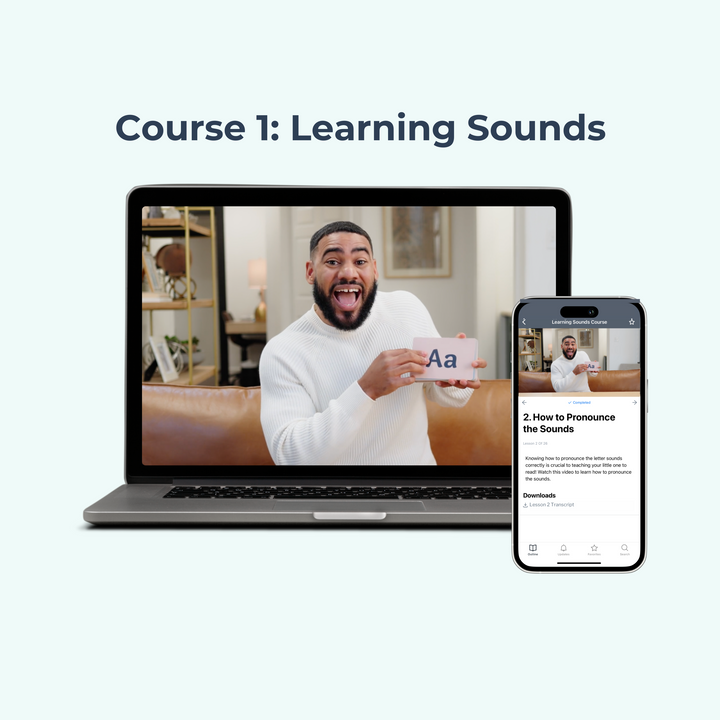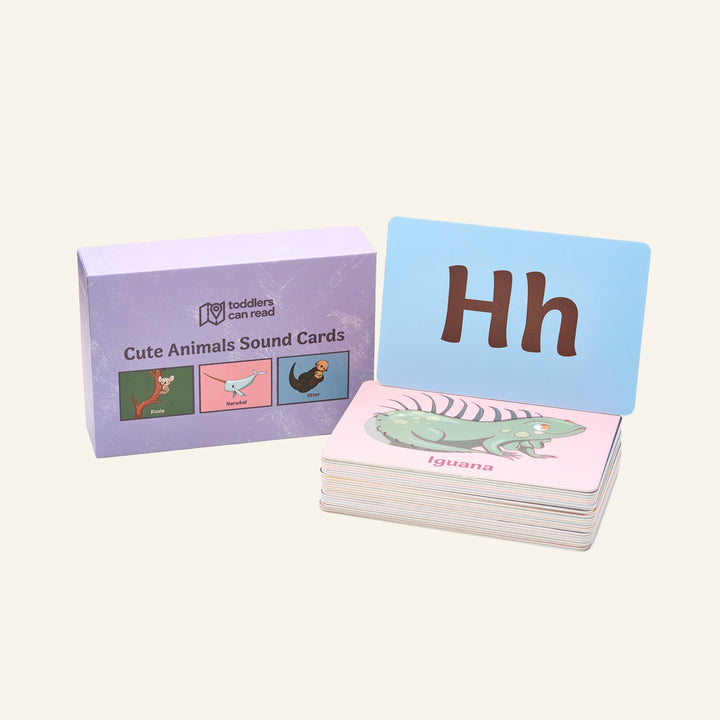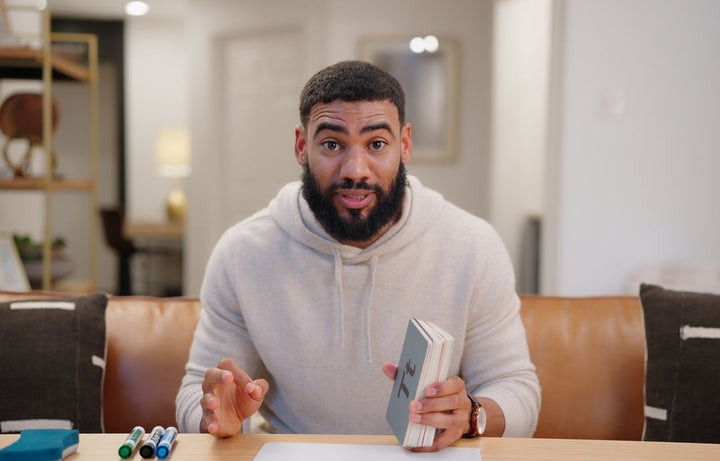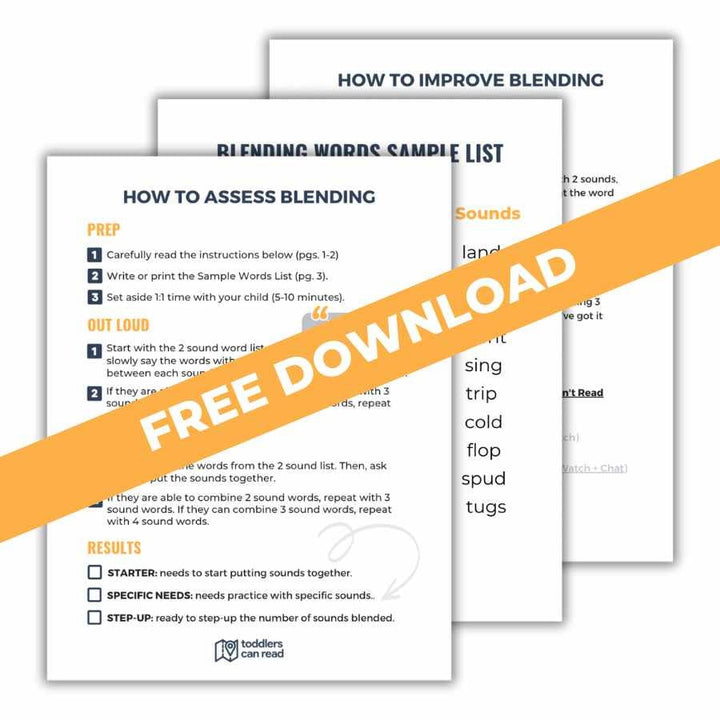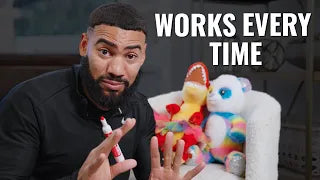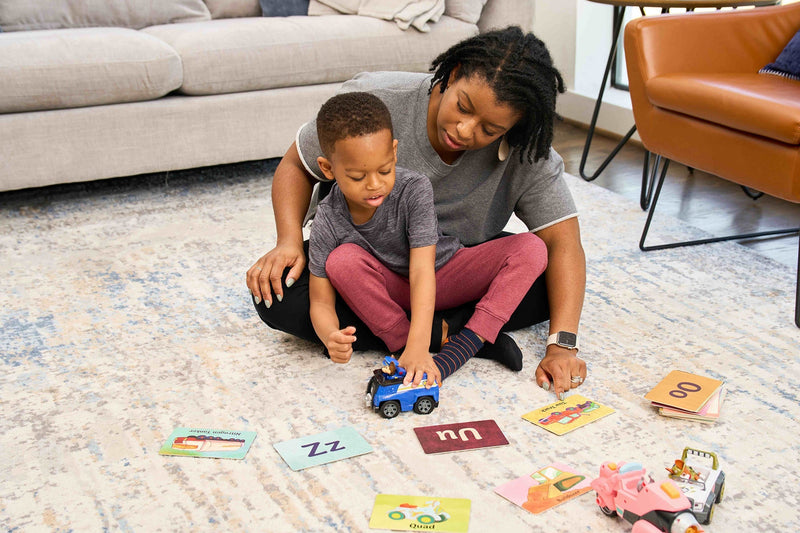If you're like most parents, then you know what it's like to send your child to school and have them return to you with a long list of sight words to memorize.
It's not uncommon for kids to bring home, 50, 75, or even 100 sight words that they need to memorize in order to pass the test/grade/subject.
And practicing that list with them? Showing them the words again and again, not sure if they're learning how to read or simply memorizing a few words that they've seen a lot of times? It's stressful. And it's not surprising that many parents (and kids) hate being drilled on sight words lists.
Now, if you follow me on social media, then what I say next is going to come as a surprise: Learning to read by memorizing sight words is a waste of time.
It's simply not productive. And while many educators will tell you just memorize these words, just memorize them, just memorize them... it's not going to teach your child how to actually read.
At least, not the thousands of other words they'll see as they progress through school and through life.
Now don't get me wrong: Kids do need to learn how to read sight words. Nobody is questioning that. But there are better and worse ways to teach your child to read sight words. And there are things your child needs to know before you ever touch that sight words list.
So in this blog, I'm going to walk you through exactly how to teach sight words in a way that will help your child not only learn those specific words, but they'll be able to read almost any word they see!
What is a sight word?
Before we jump into it, let's clarify what sight words actually are.
Sight words are any words that a reader can recognize automatically and without hesitation.
Now, the number of words a reader can recognize automatically is going to change based on their reading level. For example: A young reader who has only been reading for a year or two might only know a hundred sight words. Compare that to someone else who's been reading for years (if you've read this far, this is you!) who probably knows thousands and thousands of sight words.
But here's the thing: It's precisely BECAUSE we need to know so many sight words (thousands and thousands) that makes learning to read by memorizing sight words (50-100) so problematic. Just imagine trying to learn each of those words one-by-one. It would be almost impossible.
"But Sight Words Can't Be Sounded Out!"
By now, you might be thinking to yourself, "But Spence—sight words CAN'T be sounded out! That's why they're called sight words!"
And if I had a dollar for every time I got that comment from a parent or teacher on one of my sight word videos, I'd have retired by now.
But the thing is, that's not necessarily true. In fact, almost 90% of all words in the English language are decodable (that means we can sound them out).
As an example, let's look at this kindergarten sight word list that might look similar to one your little one would bring home from school. Take a second to count how many words on this list can be sounded out.

If your child knows the basic, single letter sounds: they can sound out 5/40 words.
If your child knows the more common vowel combos/two letter sounds: they can sound out 31/40 words.
And the remaining 9 words? Words like come, said, have? They can usually be explained by just one rule (or exception). More on this later.
Memorization Is Not the Same As Knowing How to Read
So now you might be asking yourself: "Even if they can learn how to sound out words, why does it matter? What difference does it make if they're memorizing them instead?"
Well as it turns out, it makes a big difference.
Knowing how to sound out words is crucial to later reading development and phonemic awareness (being able to sound words out) is what will ultimately give your little one the tools they need to read harder and harder books.
Think of it this way: If your child memorizes a list of 100 sight words, they'll be able to read those 100 words. But... if they learn how to sound out words, they'll be able to thousands and thousands of words on their own—even if they've never seen them before!
And the more words they can read, the more books they can read. They won't be limited to a certain level of books in the classroom library or a topic that's easier to understand. They can explore their passions and read books that genuinely interest them. Plus, when a child is able to read smoothly and effortlessly, it is much easier for them to focus their energy on actually understanding what they read. So it also improves their comprehension.
What Do Researchers Say?
But you don't just have to take my word for it. Scientists have spent decades studying how we learn to read, and the evidence is clear: whole-word memorization is not the best way to learn how to read.
Here's one of my favorite Instagram accounts, @droppingknowledgewithheidi, explaining how memorizing words impacts reading development:
(if you're looking for more accounts with helpful info on the Science of Reading, Heidi's is a great one to follow)
If you want to know more about how the brain learns to read, I highly recommend this video of cognitive neuroscientist Stanislas Dehaene, author of Reading in the Brain.
So... How DO You Teach Sight Words?
"Okay Spence, we get it! You don't think kids should memorize sight words!"
I hear you, and I promise I'll get off my soap box about it (for now).
And even though I really don't believe in memorizing sight words, there's still those 10% or so of words that are harder to sound out. Let's take a look at the list from earlier.

All the words circled in red are what I like to call tricky words, or words that are harder to sound out using the phonics rules that your child knows.
And theoretically, you could teach your little one to read those tricky words by memorizing them. But there's definitely a better way, and it's really pretty simple.
- Show your little one the word (could be on a notecard, whiteboard, etc.).
- Tell them, "This word is tricky because there's a part you haven't learned yet."
- Point out the parts of the word they can sound out.
- Teach them the part of the word that makes it tricky.
- Have them blend the word using the sounds you explained.
Here's an example of how you would teach your little one the word what.
Teaching your little one tricky words this way has a few advantages:
- Gives them a chance to review the sounds they know and practice blending
- Builds confidence around reading unfamiliar words
- Helps them remember the words more easily
And if you want more examples of how I teach tricky words, head over to my YouTube page (lots more where that came from).
Learning to Read Shouldn't Be Difficult
The goal of this blog post isn't to make you overwhelmed, or feel badly for teaching your little one to memorize sight words. In fact, that's how I taught sight words for a long time as a teacher.
The goal of this blog post is to help you feel empowered, and give you tips on how to teach your child that will make it much easier for both of you in the long run.
But if you've read this far and you do feel overwhelmed, I'm here to help; this blog post on How to Assess Your Child's Reading Ability will help you figure out exactly what your little one needs to work on.
And if you know what your child is struggling with but aren't sure exactly how to teach them, my Reading Rules course will help you teach more advanced sounds, figure out what the right books are for your little one, how to give cues that prevent reading mistakes, and guide you on which "tricky" words to teach.
But if you teach your little one their phonics sounds and how to blend those sounds together into words... you'll find those lists are going to get a hell of a lot easier—for both of you!
